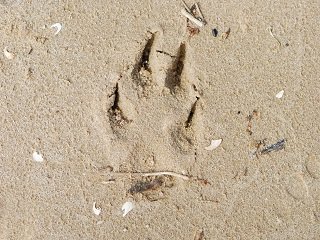 I have hunted for most of four decades and I have also served as a guide and a taxidermist, and one thing I have learned is that knowing what you are trying to say is very important. There is nothing more enjoyable to me than to speak with new hunters and listen to their retelling of special hunting moments. I get a kick out of their creative interpretations of what they have seen or experienced, and it reminds me just how intricate hunting lingo can be to new hunters. Here are a few samples to help new hunters master the language of their new hobby.
I have hunted for most of four decades and I have also served as a guide and a taxidermist, and one thing I have learned is that knowing what you are trying to say is very important. There is nothing more enjoyable to me than to speak with new hunters and listen to their retelling of special hunting moments. I get a kick out of their creative interpretations of what they have seen or experienced, and it reminds me just how intricate hunting lingo can be to new hunters. Here are a few samples to help new hunters master the language of their new hobby.
Tracks and footprints.
Whenever you see in depression in mud or dirt that was made by an animal standing or walking in that spot, it is called a track, not a ‘footprint.’ I hear the term ‘footprint’ a lot by non-hunters and it makes me chuckle sometimes because to me, a footprint is located on a birth certificate.
Trailing and tracking.
When following the blood of a wounded animal, it is called trailing, not tracking. Again, tracking is the act of following tracks or physical signs which denote the path of an animal’s travel. Trailing is the act of following the actual blood or blood trail.
Scrapes and rubs.
When a buck or bull rubs his antlers on a tree or fence post, it is called a rub, not a scrape. A scrape involves an animal scratching up, or scraping, the ground. Whitetails are notorious for making rubs and scrapes, but most North America antlered animals make both. I have seen Elk, Moose and Caribou make rubs and scrapes. There is a difference and knowing which is which could come in handy when trying to pass knowledge onto other hunters.
What is animal ‘sign?’
I have met a lot of hunters who describe animal feces (scat) as an exclusive description of sign. Poop is not sign alone. Sign can mean many things such as: broken branches in a trail, fresh tracks, scrapes, rubs or urine puddles. Sign means just about anything that signifies an animal has been in that location.
Horns vs. Antlers.
Most hunters understand that antlers are temporary appendages that are shed and regrown every year in the life of the animals who have them. However, they are often mistakenly called horns, which are completely different. Horns are permanent growths that are never shed. In fact, they are grown around a boney core and stay with an animal for their entire life. However, the one exception is the Pronghorn which is not an antelope but sometimes referred to as an antelope. The Pronghorn’s horns are actually shed each year making them very unique.
If you knew the proper use of all of these terms, you are a hunt master.








